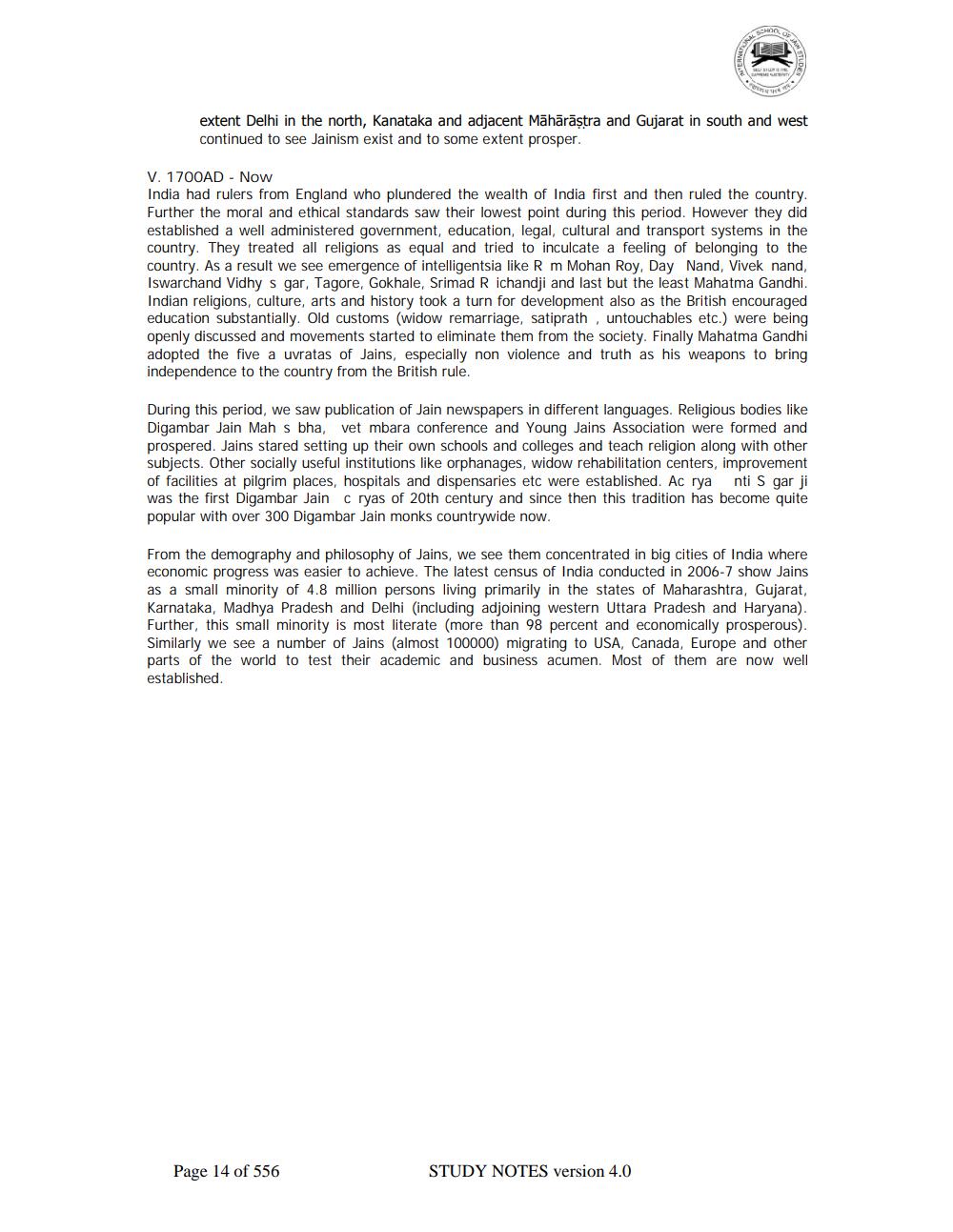________________
extent Delhi in the north, Kanataka and adjacent Māhārāstra and Gujarat in south and west continued to see Jainism exist and to some extent prosper.
V. 1700AD - Now India had rulers from England who plundered the wealth of India first and then ruled the country. Further the moral and ethical standards saw their lowest point during this period. However they did established a well administered government, education, legal, cultural and transport systems in the country. They treated all religions as equal and tried to inculcate a feeling of belonging to the country. As a result we see emergence of intelligentsia like R m Mohan Roy, Day Nand, Vivek nand, Iswarchand Vidhy s gar, Tagore, Gokhale, Srimad R ichandji and last but the least Mahatma Gandhi. Indian religions, culture, arts and history took a turn for development also as the British encouraged education substantially. Old customs (widow remarriage, satiprath, untouchables etc.) were being openly discussed and movements started to eliminate them from the society. Finally Mahatma Gandhi adopted the five a uvratas of Jains, especially non violence and truth as his weapons to bring independence to the country from the British rule.
During this period, we saw publication of Jain newspapers in different languages. Religious bodies like Digambar Jain Mah s bha, vet mbara conference and Young Jains Association were formed and prospered. Jains stared setting up their own schools and colleges and teach religion along with other subjects. Other socially useful institutions like orphanages, widow rehabilitation centers, improvement of facilities at pilgrim places, hospitals and dispensaries etc were established. Ac rya nti S gar ji was the first Digambar Jain c ryas of 20th century and since then this tradition has become quite popular with over 300 Digambar Jain monks countrywide now.
From the demography and philosophy of Jains, we see them concentrated in big cities of India where economic progress was easier to achieve. The latest census of India conducted in 2006-7 show Jains as a small minority of 4.8 million persons living primarily in the states of Maharashtra, Gujarat, Karnataka, Madhya Pradesh and Delhi (including adjoining western Uttara Pradesh and Haryana). Further, this small minority is most literate (more than 98 percent and economically prosperous). Similarly we see a number of Jains (almost 100000) migrating to USA, Canada, Europe and other parts of the world to test their academic and business acumen. Most of them are now well established.
Page 14 of 556
STUDY NOTES version 4.0




